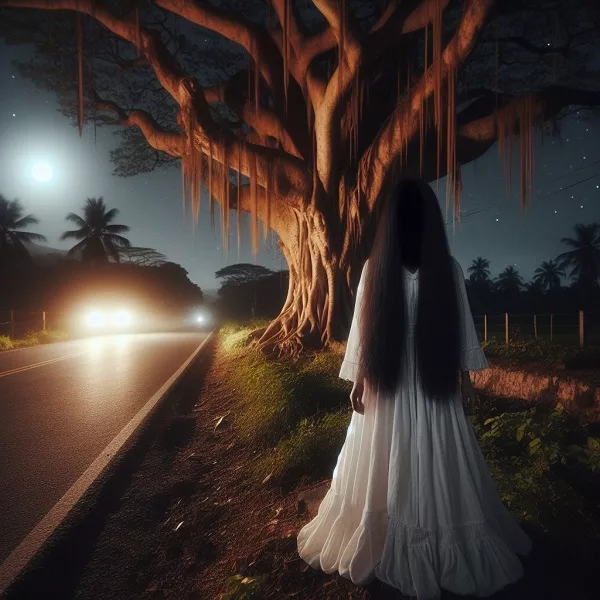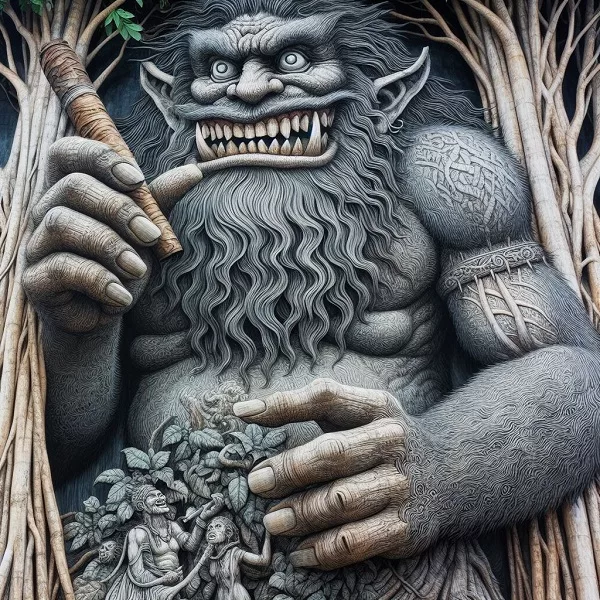
Philippines Mythical Creatures: A Dive into Folklore and Legends 🌟🧚♂️
Introduction to Philippines Mythical Creatures 🌟🧚♂️
The rich tapestry of Filipino culture is woven with an array of mythical creatures, each holding its own allure and captivating tales. These creatures, rooted in folklore, transcend mere legends to become integral parts of Filipino identity, influencing beliefs, rituals, and societal norms.
Journey Through Enchantment: Unveiling the Philippines’ Mythical Creatures
The Philippines, an archipelago bathed in sunshine and vibrant culture, holds mysteries beyond its stunning beaches and lush rainforests. Its depths echo with ancient whispers, tales woven into the very fabric of existence. These are the stories of mythical creatures, fantastical beings who dance between legend and reality, their echoes shaping the Filipino identity.
Let’s embark on a captivating exploration of these legendary beings, diving into their captivating forms and unraveling the stories that bind them to the Filipino soul.
Philippines mythical creatures Top 10 Mythical Creatures in the Philippines:
- Aswang: The apex predator of Philippine folklore, the Aswang is a shapeshifting monster that feasts on human flesh. Often depicted as a beautiful woman who transforms into a monstrous bird, the Aswang embodies our primal fear of the unknown and the duality of beauty and savagery.
- Manananggal: A terrifying cousin of the Aswang, the Manananggal is a vampire-like creature who detaches its upper torso at night, leaving its lower half hidden and vulnerable. With razor-sharp wings, it hunts for pregnant women and feasts on their unborn children. The Manananggal embodies the anxieties of childbirth and the fragility of life.
- Kapre: Towering giants guarding banyan trees, Kapres lure humans with laughter and trickery. Often depicted as hairy beasts with backwards feet and a penchant for tobacco, they represent the untamed wilderness and the power of nature.
- Tikbalang: Mischievous tricksters of the forest, Tikbalangs have long limbs and backward-facing feet. They lead travelers astray with playful illusions and harmless pranks, serving as guardians of the natural world.
- Engkanto/Enkanta: Beautiful, ethereal beings who dwell in enchanted forests, Engkantos/Enkantas possess magical powers and the ability to lure mortals with their charm. Their stories often revolve around forbidden love and the consequences of crossing boundaries between the human and spirit realms.
- Diwata: Nature spirits akin to fairies, Diwatas guard specific elements, like rivers, mountains, or rice fields. They are benevolent protectors, bestowing blessings upon those who respect nature and punishing those who exploit it.
- Bakunawa: A colossal serpent believed to cause eclipses by attempting to devour the moon, Bakunawa embodies the awe-inspiring power and unpredictability of natural forces.
- Tamawo: Grotesque, ape-like creatures with insatiable appetites, Tamawos live in caves and steal food from villagers. They represent the primal instincts of humanity and the dangers of unchecked greed.
- Nuno sa Punso: Similar to goblins, Nunos sa Punso are mischievous spirits who live in anthills and play tricks on humans. They remind us of the interconnectedness of the natural world and the importance of respecting even the smallest creatures.
- White Lady: A tragic figure cloaked in sorrow, the White Lady is the ghost of a woman who wanders eternally, searching for lost love or seeking revenge. Her tale speaks of unrequited love, loss, and the enduring power of human emotions.
Philippines mythical creatures Philippine Mythology and its Gods:
Beyond these captivating creatures lies a rich tapestry of Philippine mythology, populated by powerful deities who govern the heavens, the earth, and the underworld. Bathala, the supreme creator god, presides over this pantheon, alongside figures like Maria Makiling, the protector of Mount Makiling, and Apolaki, the sun god. These deities interweave with the mythical creatures, shaping their actions and influencing the fate of humankind.
Five Philippine Folklore Creatures in Tagalog:
- Kapre (Kápre) – Higanteng guwardiya ng puno ng banyan
- Tikbalang (Tikbálang) – Manloloko sa kagubatan na may paabaliktad na paa
- Engkanto/Enkanta (Engkánto/Engkánta) – Magagandang nilalang na naninirahan sa mga kagubatang puno ng mahika
- Diwata (Diwata) – Espiritu ng kalikasan na nagbabantay
Origins and Cultural Significance 🏛️🌍
Historical Background 📜
The origins of Philippines mythical creatures trace back to the pre-colonial era when indigenous beliefs intermingled with influences from various cultures such as Malay, Chinese, Spanish, and Islamic. This amalgamation gave birth to an intriguing array of mythical beings, each with its unique traits and stories.
Influence on Filipino Culture 🎭
The influence of these mythical creatures permeates Filipino culture deeply. They are not merely fanciful stories but living entities embedded in traditions, superstitions, and the collective imagination of the Filipino people. From childhood bedtime stories to cautionary tales, these creatures continue to shape perceptions and societal norms.
Popular Mythical Creatures 🐲👹
Aswang 👻
The Aswang stands as one of the most feared creatures in Filipino folklore. This shape-shifter is believed to take on various forms, including that of a beautiful woman by day and a ghastly monster by night. Legends depict the Aswang as a creature preying on the living, often feeding on flesh, blood, or unborn fetuses.
Kapre 🌳

The Kapre, a giant tree-dwelling creature, captures the imagination with its immense size and affinity for large trees. Described as having a robust build and being clad in indigenous garb, the Kapre is often pictured lounging atop trees, smoking a cigar. Despite its intimidating appearance, some tales portray the Kapre as a gentle giant, while others highlight its penchant for mischief.
Tikbalang 🐎
The Tikbalang, a creature with the body of a horse and the head of a human, is known for its mischievous nature. Often sighted in forests and mountains, it is said to lead travelers astray. Folklore suggests that encountering a Tikbalang may bring either good fortune or misfortune, depending on the circumstances.
Nuno sa Punso 🏞️
The Nuno sa Punso, a diminutive entity dwelling in anthills or termite mounds, commands respect in Filipino folklore. It is believed that disturbing its habitat could bring misfortune or illness to those responsible. Despite its small stature, local stories often depict the Nuno sa Punso as a powerful and vengeful being.
Characteristics and Legends of Each Creature 📖🌟
Aswang – The Shape-Shifter 🦇👥
The Aswang’s ability to metamorphose from a human into a grotesque creature is a recurring motif in stories. It can change its appearance at will, enabling it to move undetected among humans. Tales of the Aswang’s terrifying acts, like kidnapping and consuming humans or livestock, contribute to its fearful reputation.
Kapre – The Tree Dweller 🚬🌿
The Kapre’s sheer size and strength instill both fear and fascination. Despite its intimidating presence, some tales paint a more benign picture, suggesting that the Kapre is a protector of nature. However, encounters with a Kapre may also result in pranks or tricks played on unsuspecting individuals.
Tikbalang – The Half-Horse, Half-Human 🤔🐴
The Tikbalang’s form, resembling a humanoid horse, varies in appearance across regions. Encountering a Tikbalang is believed to bring either good luck or misfortune, depending on the circumstances. Stories often warn travelers to be wary of this creature’s influence, as getting lost in the mountains might be attributed to a Tikbalang encounter.
Nuno sa Punso – The Dwarf-Like Entity 🧝♂️🪶
Despite its small stature, the Nuno sa Punso is deeply respected in Filipino folklore. Stories caution against disturbing its dwelling, as it is believed that disrespecting the Nuno sa Punso may lead to illness, misfortune, or even death.
Regional Variations and Beliefs 🗺️🤲
Geographical Influence on Mythical Creatures 🏞️🌐
Different regions within the Philippines showcase variations in these mythical creatures. Geographical landscapes, local customs, and oral traditions influence the adaptations and interpretations of these creatures, adding layers of diversity to their stories.
Local Stories and Adaptations 📚🗣️
Communities across the Philippines have their unique adaptations and interpretations of these mythical creatures. Oral traditions play a vital role in preserving these stories, which are often passed down through generations. These adaptations reflect the rich tapestry of cultural diversity within the country.
Impact on Modern Culture 📺🎬
Influence in Media and Entertainment 📚🎥
The allure of Philippines mythical creatures persists in contemporary culture, manifesting in various forms of media and entertainment. From literature to movies and television shows, these creatures continue to captivate audiences, preserving their relevance and appeal across generations.
Continued Beliefs and Traditions 🌟🔮
Despite the rapid modernization of the Philippines, belief in these mythical creatures persists in some rural areas. Traditions and rituals associated with these creatures still find a place in certain communities, highlighting the enduring power of folklore in shaping beliefs and practices.
Conclusion 🎉🌈
The enigmatic allure of Philippines mythical creatures transcends mere storytelling; it is a testament to the vibrant culture and rich heritage of the Filipino people. These creatures, deeply rooted in folklore, continue to weave their magic through the tapestry of beliefs, traditions, and societal norms, leaving an indelible mark on the nation’s identity.
Unique FAQs frequently ask questions
Are these mythical creatures believed to be real in the Philippines today?
While beliefs vary across regions, some communities still hold strong beliefs in these creatures, considering them part of their cultural heritage.
What role do these creatures play in Filipino festivals and traditions?
They often serve as motifs in festivals, where rituals and performances showcase stories associated with these creatures, celebrating their cultural significance.
Have these mythical creatures influenced Filipino cuisine or art forms?
Some dishes or artworks might draw inspiration from these creatures, reflecting their influence on various aspects of Filipino culture.
Are there efforts to preserve these myths and legends in the Philippines?
Yes, initiatives exist to document and preserve these stories, recognizing their cultural value and importance in Filipino heritage.
Do younger generations in the Philippines still engage with these mythical tales?
While modernization has shifted attention, efforts to introduce these stories to younger generations persist, ensuring the continuity of these rich cultural narratives.
Are these mythical creatures real?
While there is no scientific evidence to support their existence, these creatures hold a significant place in Filipino culture and tradition. They represent the fears, hopes, and values of the people
You may also like
Table of Contents
Giovanni Carlo P. Bagayas is a seasoned travel guide and passionate explorer from the Philippines. With years of experience uncovering the hidden gems of his homeland, Giovanni has dedicated his career to showcasing the beauty, culture, and adventure that the Philippines has to offer. As the author of Best Philippines Travel Guide, he combines his expertise and love for travel to provide insightful tips, detailed itineraries, and captivating stories for travelers seeking unforgettable experiences in the Philippines. Giovanni’s mission is to inspire wanderlust and help visitors discover the true essence of his vibrant country.
